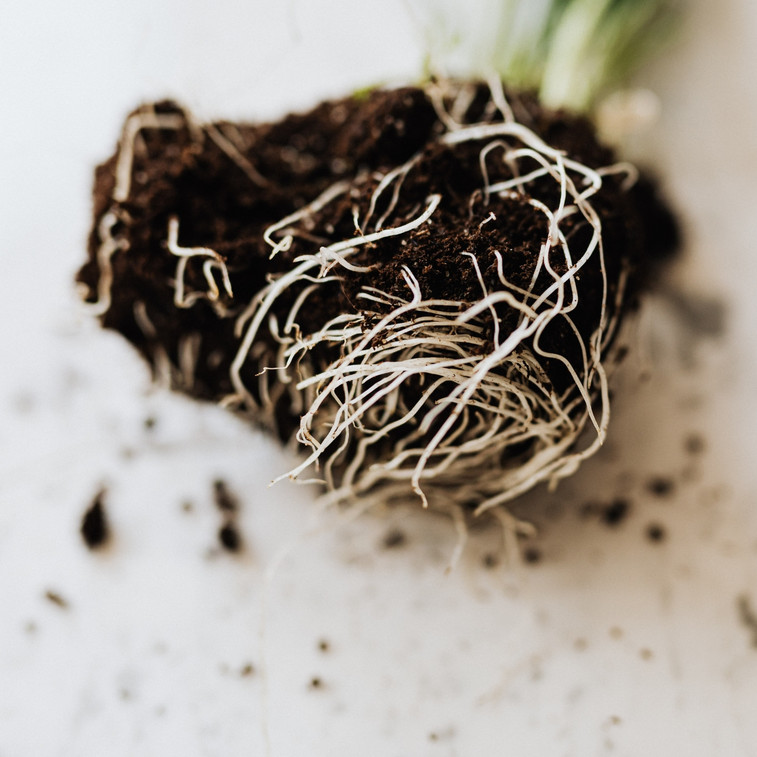
The Business Case for Biostimulants in Australian Nurseries
Posted by Jason on 29th Oct 2025
What if you could cut six weeks off every grow cycle?
That’s exactly what recent Fernland trials have been showing.
In one nursery test on Bangalow palms, plants treated twice with a microbial program over three months recorded around double the root mass (11 g vs 5 g) and reached saleable root wrap about six weeks earlier in a six-month cycle.
That’s roughly a 20–25% faster turnaround — without extra fertiliser or water.
For business owners and production managers, those numbers mean fewer weeks holding stock, lower input costs, and more cash turning over per square metre.
So what are biostimulants, really?
Biostimulants are products that stimulate plant processes — things like nutrient uptake, root development and stress tolerance — without being traditional fertilisers.
They’re made from seaweed extracts, humic and fulvic acids, amino acids, and microbial metabolites, and are designed to help plants use nutrients more efficiently.
Then there are inoculants, which are living microbes such as Bacillus, Pseudomonas or Trichoderma. These organisms colonise the root zone, releasing locked-up nutrients and defending against harmful soil pathogens.
In simple terms:
All inoculants are biostimulants — but not all biostimulants are inoculants.
They work best together. The biostimulant feeds the soil life and improves structure; the inoculant brings the live biology that actually cycles nutrients.
Explore Fernland's Biostimulant Range: FloraTech Rejuvenate | FloraTech Stimulate
Why nurseries are paying attention
Australian soils are notoriously good at locking up phosphorus and other nutrients. According to CSIRO research on phosphorus-use efficiency in Australian soils, this low phosphorus-use efficiency limits growth and forces higher fertiliser applications. Long-term Australian studies in Crop & Pasture Science show that much of the phosphorus applied to soils quickly becomes fixed and unavailable to plants, highlighting the need for biological inputs that improve nutrient availability.
Adding biology into the mix changes the game.
Bacillus and Pseudomonas species can solubilise phosphorus and iron while producing growth-promoting compounds, while Trichoderma fungi have been shown to enhance root growth and stress tolerance in nursery and protected cropping systems. Together they help plants handle stress and outcompete disease organisms.
For nursery production, that means:
-
Better nutrient uptake from the same fertiliser spend.
-
Healthier root systems that recover faster after transplanting.
-
Reduced reliance on fungicides and corrective nutrition.
-
More uniform crops that reach sale size sooner.
What the trials are showing
Fernland’s internal work and grower feedback all point the same way:
“Plants are ready earlier, roots are thicker, and losses through propagation are lower.”
That was the grower response during trials at Alison Horticulture (Northern Rivers). The treated Bangalow palms weren’t just bigger — they had stronger, more fibrous roots, handled heat swings better, and were transplant-ready weeks ahead of schedule.
The effect isn’t limited to palms. Similar improvements have been seen across bedding plants, foliage lines and turf plugs — especially when biostimulants are used through propagation and potting rather than as a rescue treatment.
It’s not about replacing fertiliser
One of the most common misconceptions is that biostimulants are “organic fertilisers.” They’re not.They don’t add much nutrition — they make the existing nutrition work harder.
In most systems, the improvement in fertiliser efficiency sits around 5–20%, depending on media, irrigation and fertiliser program. That’s because microbial activity unlocks bound nutrients and extends their availability in the root zone, as shown in <arel="noopener" target="_new" class="decorated-link" href="https://www.publish.csiro.au/cp/CP13112?utm_source=chatgpt.com">Australian research published in Crop & Pasture Science.
The operational details that matter
If you’re trialling biostimulants or inoculants in your nursery, keep these basics in mind:
-
Clean water: Avoid chlorinated or peroxide-treated water; these sanitizers can reduce live microbial counts.
-
Timing: Keep copper and systemic fungicides at least five to seven days away from microbial applications (copper is especially harsh).
-
Placement: Soil drenches, fertigation or irrigation deliver the best results — foliar applications are short-lived.
-
Rate discipline: More isn’t better. Each product has a sweet spot; over-applying won’t improve results.
-
Measure everything: Track cycle length, nutrient use, propagation losses and uniformity — that’s where your ROI shows up.
Compliance and quality assurance
In Australia, plant biostimulants are regulated under the APVMA and DAFF depending on their claims. Always ensure you stay within plant- and soil-function claims rather than pest-control claims. See APVMA guidance on plant biostimulant regulation for current compliance information.
For exporters or QA teams working to international standards, the EU formally recognises plant biostimulants under Regulation (EU) 2019/1009, a framework many Australian suppliers now reference when aligning product documentation.
What it means for your nursery
For growers, the numbers are adding up:
-
Cycle time reduced by up to 25%.
-
Less shrink and propagation loss.
-
Lower fungicide and fertiliser spend.
-
More consistent quality at dispatch.
When you scale that across benches, bays or hectares, the commercial case writes itself. Biostimulants aren’t just plant boosters — they’re a profitability tool.
For a customised program, contact the Fernland agronomy team to discuss biostimulant scheduling for your nursery.
